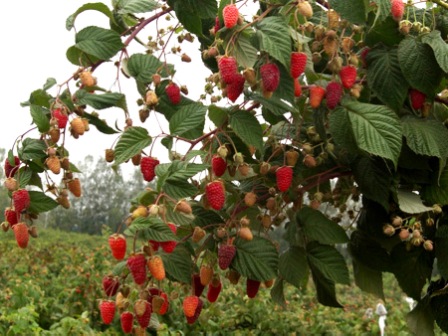 If you have allocated a plot for raspberries, and decided to seriously grow a healthy and tasty berry, let's find out what raspberry diseases are, see a photo and tell about their treatment. And there are plenty of pests and sores annoying our raspberry. But we will not upset you in advance, if you really approach prophylaxis and agricultural technology, consider that half the work has been done, it remains only to carefully monitor the bushes. And as soon as they noticed that it was starting to hurt, or a small dirty trickster was wound up on bushes and wants to leave you without a crop - right away, and we’ll take it to nothing.
If you have allocated a plot for raspberries, and decided to seriously grow a healthy and tasty berry, let's find out what raspberry diseases are, see a photo and tell about their treatment. And there are plenty of pests and sores annoying our raspberry. But we will not upset you in advance, if you really approach prophylaxis and agricultural technology, consider that half the work has been done, it remains only to carefully monitor the bushes. And as soon as they noticed that it was starting to hurt, or a small dirty trickster was wound up on bushes and wants to leave you without a crop - right away, and we’ll take it to nothing.
See also: diseases of apple trees and their treatment photo.
Bacterial cancer
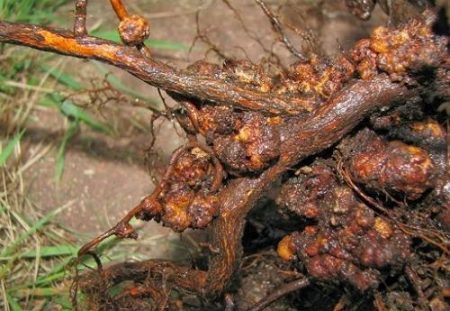
There are two types of this infection - root and stem, and both are very dangerous for raspberries. Root cancer does not spare bushes in all climatic zones; stem cancer prefers to spoil raspberries in southern zones, especially in humid places. The root on the roots settles, forming tumors, gradually increasing, growing together, covered with cracks. The stem is formed by crest-shaped growths on the stems, tearing the bark. Both species lead to the death of bushes.
What to do: if the damage is single and not large, remove and burn the infected bushes. If the disease has already spread throughout the bush, change the place of residence of the raspberry, treating the new place with copper sulphate and sanitizing the roots of seedlings.
Anthracnose
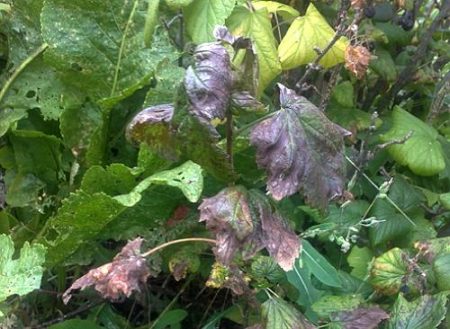
In a warm climate with high humidity, anthracnose is very active. Purple spots appear on the shoots, then they move to the leaves, the bark turns gray, the foliage dies, the berries lose their taste and become dry.
How to treat: Remove the affected shoots, loosen the soil, weed out the weeds, process with special preparations. For prophylaxis, treat in spring with 1% Bordeaux liquid.
Mosaic
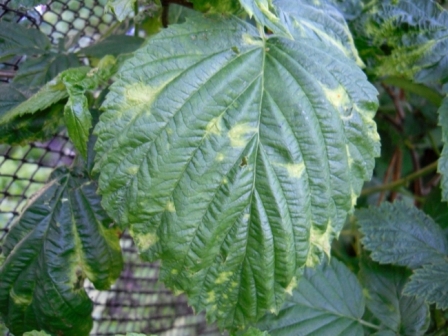
The leaf becomes smaller, darkens in the middle and brightens along the edges, the berries become tasteless, the bushes weaken, the yield decreases - this is a mosaic, you need to treat the bushes.
How to fight: It will not be possible to save the plants infected with the mosaic, only remove and burn them. For prevention, fight aphids and ticks, as they carry the virus.
Ring spotting
If you notice that the raspberry leaflets began to curl, went yellowish spots, became thin and brittle - this is a ring-spotted virus that has arrived in your raspberry - urgently take action!
Check the soil for the presence of nematodes, if the amount exceeds 20 per 0.5 kg of soil - treat with nematicides.
Septoria
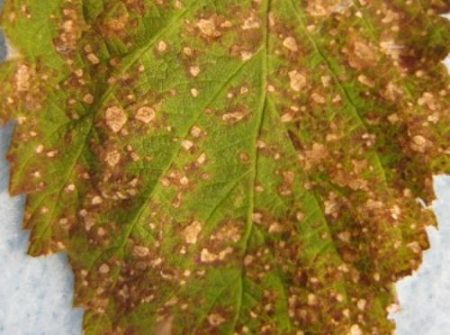
If you notice brownish spots turning into whitish spots with leaves and black dots on the stems on the leaves and stems, your pets will get sick with septoria. We urgently take measures, otherwise a sore can lead to the death of the crop.
How to treat: cut out the affected parts and burn, treat with Bordeaux liquid, be very careful with the introduction of nitrogen.
Rust
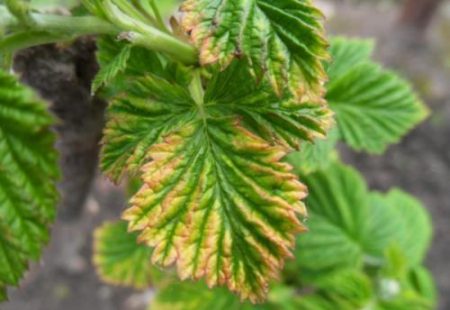
He especially loves humid areas. In spring, yellow-brown bulges appear on the leaves, on the shoots in the form of sores, by the autumn spores of the fungus appear in the form of a dark plaque.
How to deal: affected plants must be disposed of. Preventive measures in the form of loosening the soil, removing weeds, mulching in the spring with manure and treating with Bordeaux liquid help.
Curly Raspberries
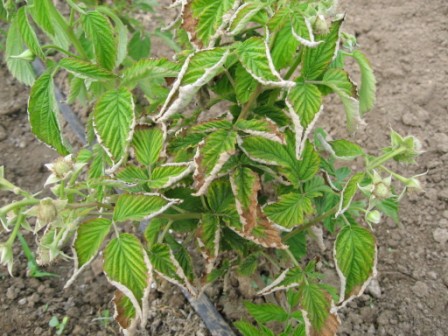
If the leaves began to curl down the vein, gradually becoming bronze from below, and the green petals are curly, you will not have to wait for the harvest.
Control measures: destroy the diseased bushes, fight the aphids that the virus carries, processing karbofos.
Sprouting raspberries
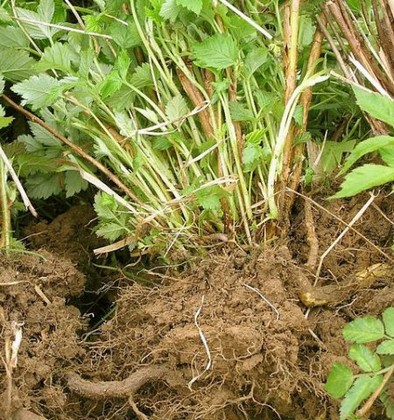
The whole raspberry can lime. Instead of strong bushes, a lot of thin and low shoots with chlorotic leaves appear. It is carried by cicadas, ticks and aphids.
Control measures: the first is the fight against disease vectors, the second is to burn diseased plants, treatment with malathion twice - before flowering and at the end of the season.
Interesting information: fertile zodiac signs.
Raspberry Pests
Your pets have a lot of them, tasty to tender young leaves and tasty berries. One of them is a raspberry glass-case, a blue-and-black butterfly, which hides its caterpillars for wintering in the stalks of raspberries. In the spring, these gnawing insects begin to actively destroy raspberry stems, engraving them from the inside. In July, butterflies fly out, lay eggs at the roots of raspberries, from which caterpillars appear and begin to bite into the roots of raspberries.
How to fight: in order to prevent the development of glass, you need to do deep pruning and burning of damaged stems.
Raspberry beetle
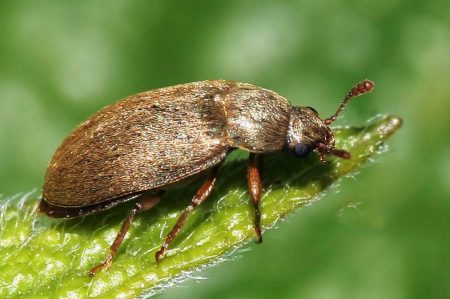
They bite into tender buds, eat young leaves, lay eggs in flowers, damage berries. They are especially angry during the flowering period.
How to fight: before flowering, be sure to spray with herbal infusion in the form of marigolds and hot peppers. During the budding period, apply “Confidor” or “Spark”, digging to destroy the larvae is very effective.
By the way, moles can harm the garden, look how to get rid of moles in the country in a simple way.
Weevil
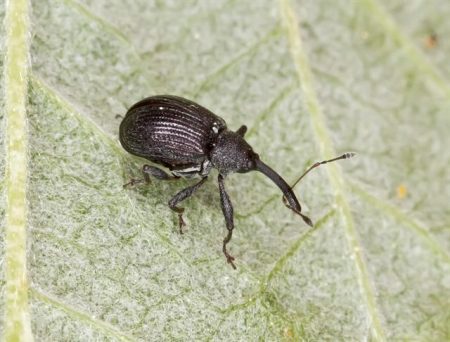
In spring, they lay eggs in buds, bite the peduncle, by mid-summer there are a lot of bugs that spoil all the bushes, eat them out of the middle, and winter in fallen foliage.
How to fight: Before flowering, treat with karbofos, repeat in August, dig in the autumn, to destroy the weevil eggs and not leave them for wintering. Processing by "Condor" before flowering also helps.
Kidney moth
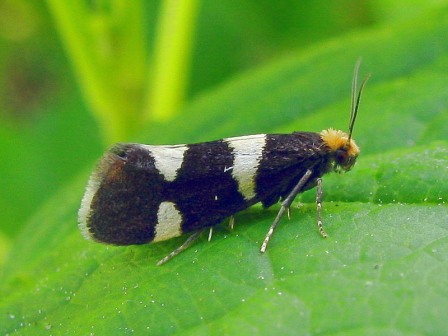
In spring, caterpillars already sit in the kidneys, cause the kidneys to dry out, gnaw passages and holes, the bushes die.
In terms of prevention, digging the soil, low cutting of bushes and burning of damaged areas of bushes helps.
Gall mosquito
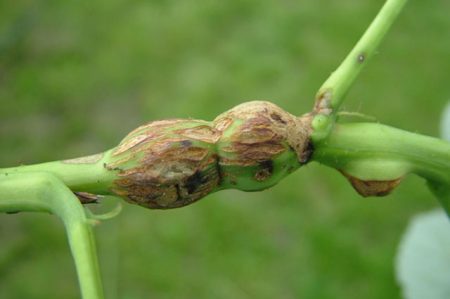
Another small dirty trick that can pretty much damage raspberries. Larvae start under the bark and eat the stem from the inside. In places where larvae sit, swellings (galls) form.
Control measures: find, delete, burn.


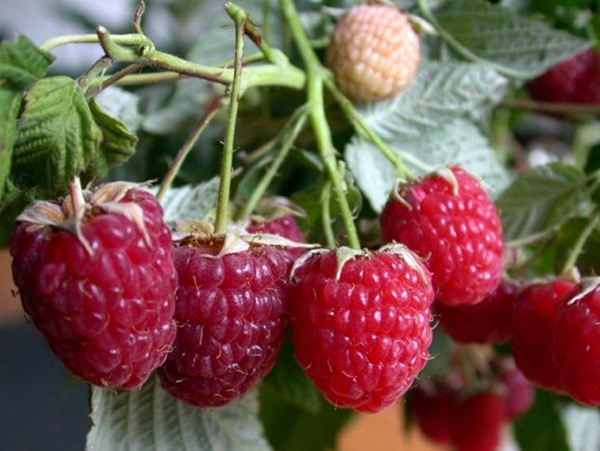
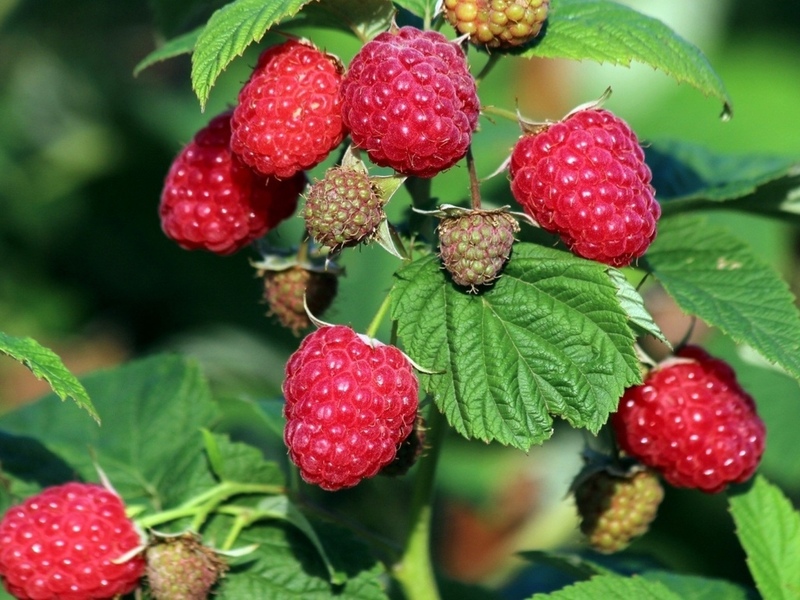
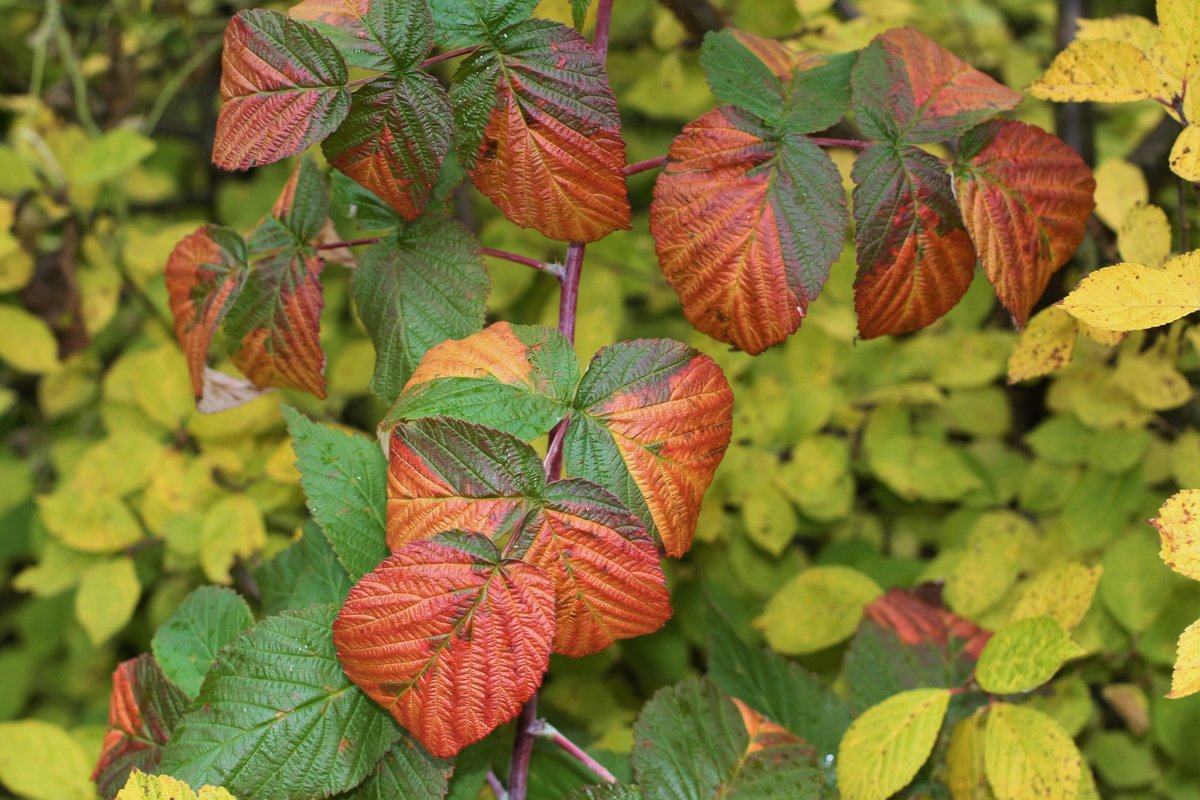 Black raspberries in autumn: care and preparation for winter shelter, pruning
Black raspberries in autumn: care and preparation for winter shelter, pruning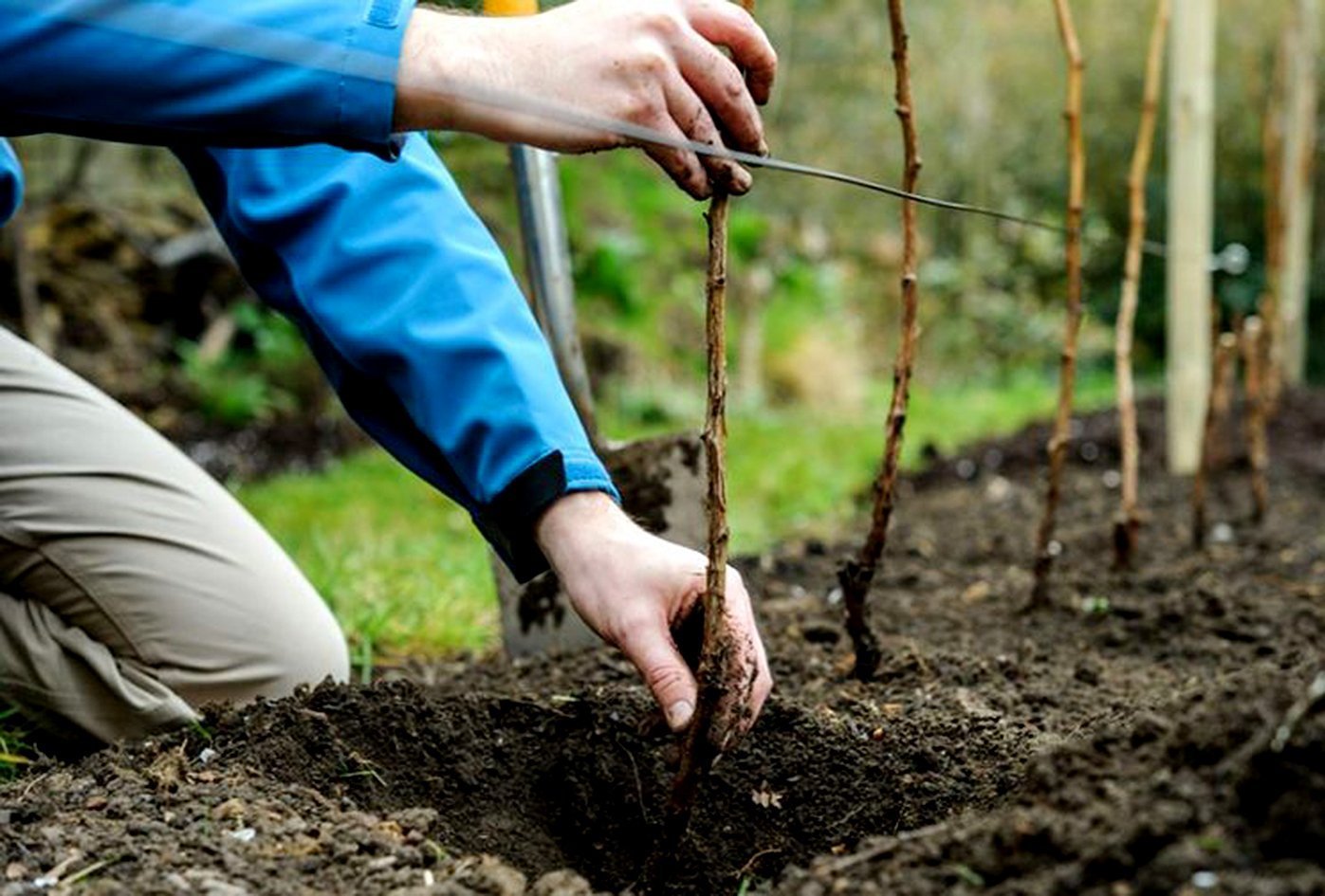 Features planting raspberries in the fall and care for it
Features planting raspberries in the fall and care for it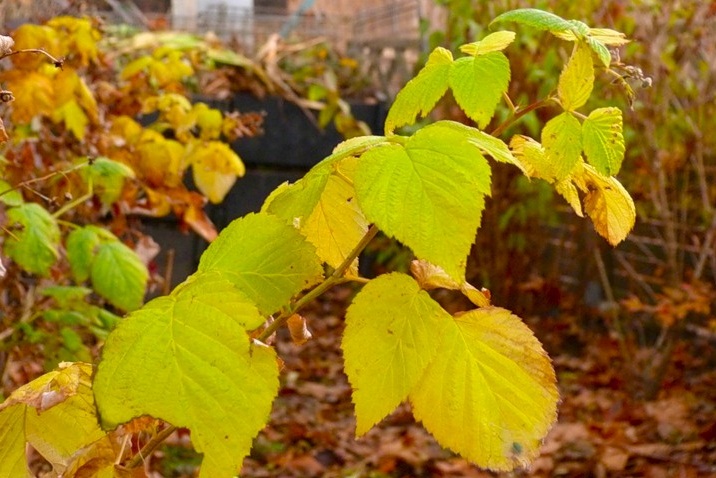 Proper care for raspberries in the fall and its preparation for winter
Proper care for raspberries in the fall and its preparation for winter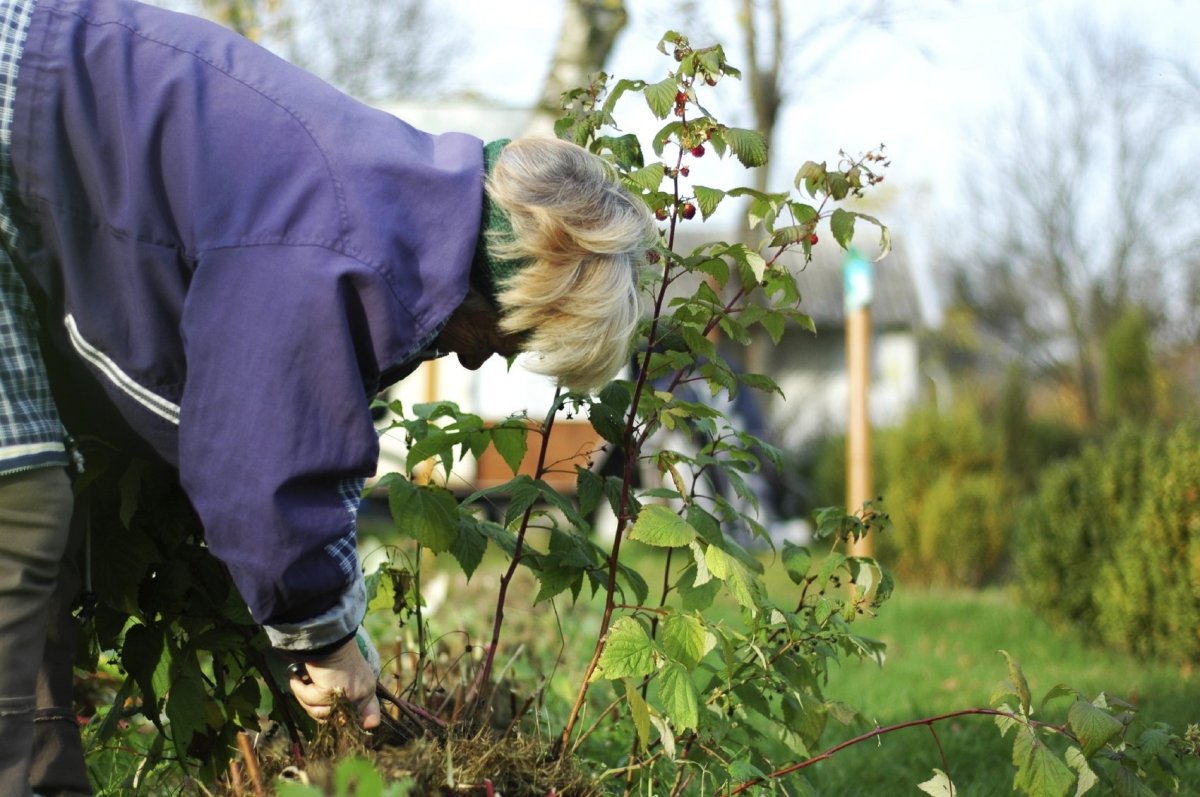 Care for maintenance raspberries in autumn: pruning and top dressing
Care for maintenance raspberries in autumn: pruning and top dressing